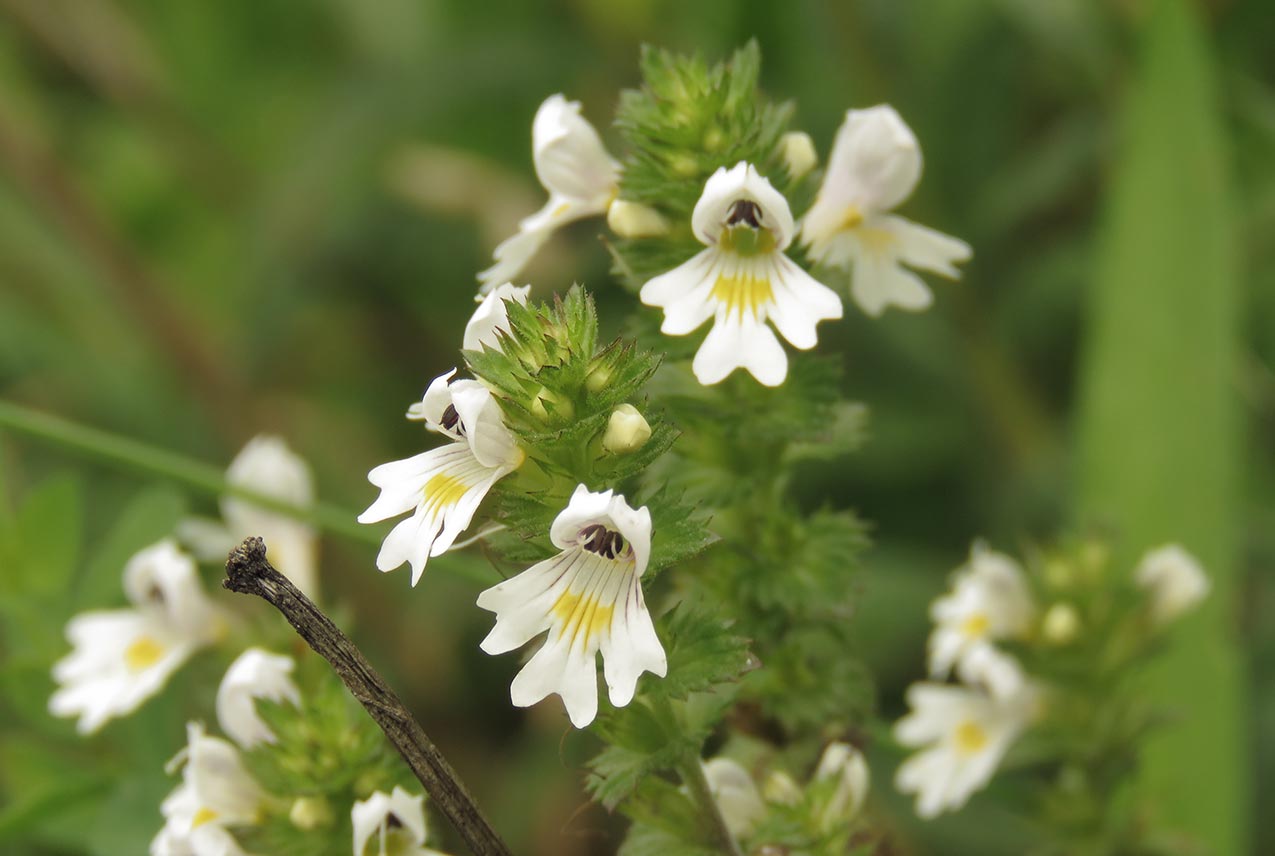Euphrasia officinalis
Eyebright
Eyebright is a 1 to 5-inch, delicate, annual herb native to grassy meadows in Europe. It grows numerous small flowers with extraordinary vertical stripes of pale violet running down three white or at times reddish colored lobe shaped petals spotted with yellow or darker purple spots. It is steeped in history dating back to antiquity. There were three Charites or “Graces” (Roman) in Greek Mythology: Aglaia, the Grace that symbolized Beauty, Euphrosyne, the Grace of Delight and Thalia, the Grace of Blossom. According to Greek poet Pindar, these enchanting goddesses were created to fill the world with pleasant moments and goodwill. Thus the pretty little herb Eyebright helps bring delight to the Eyes of mere mortals; literally as well as figuratively. Surprisingly the classic Greek Physicians Dioscorides and Pliny do not mention this herb in their works. Many other early authors in works dating back to the 14th century mention the use of Eyebright both externally and internally support the eyes and sinuses.

What is Eyebright Used For?
Traditional Health Benefits of Eyebright
